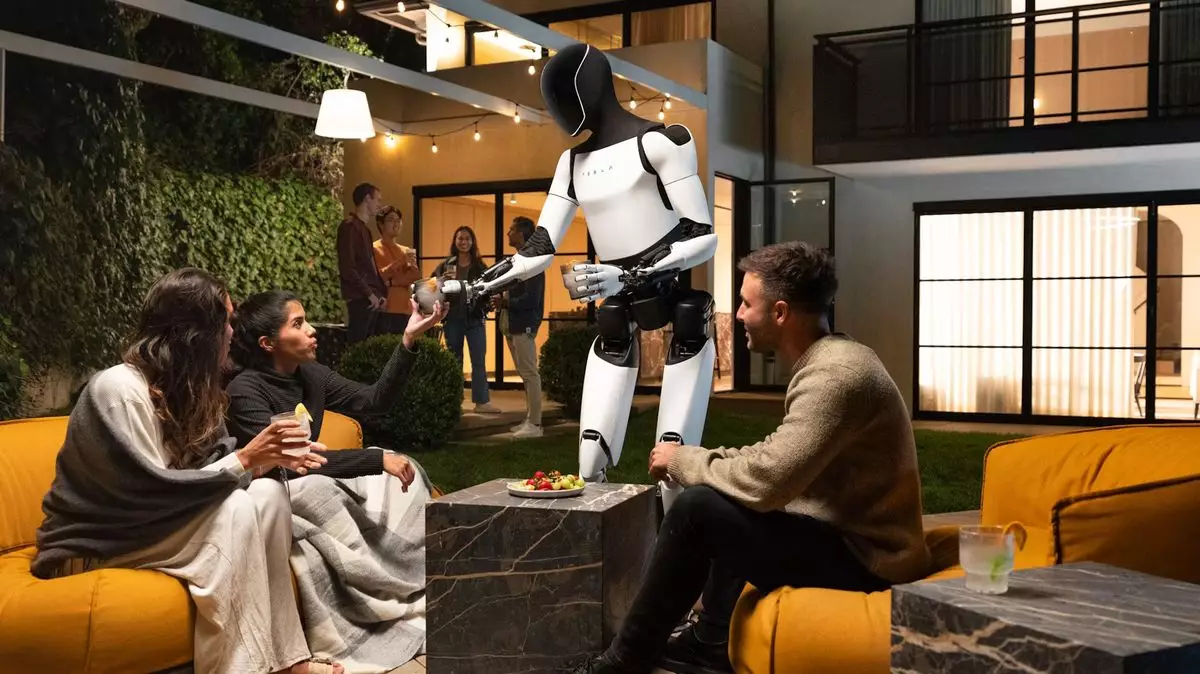In the ever-evolving landscape of technology, few figureheads stir as much excitement—and skepticism—as Elon Musk. His recent focus on humanoid robots, known as the Optimus series, brings a fresh wave of speculation and curiosity. While the idea of robots seamlessly integrating into our daily lives captivates media and tech enthusiasts alike, the reality behind these promises might be more complex than Musk suggests.
The journey began in 2021 when Musk introduced an early iteration of the humanoid robot, which, to the disappointment of many, turned out to be a human in a suit. This unconventional launch was soon succeeded by a prototype that, although still rudimentary, demonstrated basic locomotion—a feat that many regarded as a step forward, albeit a slow one. The optimism surrounding Optimus grew with its physical capabilities, capturing imaginations worldwide without making any substantial claims regarding functionality.
Fast forward to the recent We, Robot event, where Musk showcased a more advanced version of the Optimus. This presentation was accompanied by grand declarations. Musk claimed the robot would serve multiple roles—from a caregiver to a personal assistant—inviting viewers to imagine a world where each person could own their very own ‘Optimus buddy.’ Yet amid the enthusiasm surrounding these bold promises lies a lingering question: just how feasible are Musk’s aspirations in the realm of robotics?
Musk’s presentation suggested a transformative future where Optimus would interact and assist us in daily tasks: walking dogs, delivering groceries, and even serving drinks at social gatherings. At the afterparty, a prototype did indeed serve drinks, but reports indicated that it was being manually controlled by Tesla employees, hinting at the limitations of current robotics technology. The illusion of autonomy appeared to take precedence over actual advanced functionality.
This revelation raises critical points about the nature of these demonstrations. While they showcase the intriguing potential of bipedal robots, they also blur the lines between reality and marketing spectacle. Remarks from tech outlets pointed out that Musk did not emphasize the robots’ autonomy or AI capabilities during his presentation—key components that would make such a futuristic vision credible. This omission fuels skepticism regarding Musk’s commitments to technological integrity.
Social media reactions mirror the skepticism borne from Musk’s past proclamations, especially given his track record with ambitious yet unfulfilled projections. While many clamor for the advancement of robotics, there arises a significant concern about inflated promises. Analysis suggests that, while the aspiration is noble and technology is progressing, the actual timeline for robust, autonomous robots performing complex tasks daily remains a distant prospect.
The idea that robots will soon undertake household chores is certainly attractive, but the underlying capabilities must align with public expectations. Can we genuinely rely on humanoid robots to complete intricate tasks in a home setting? As we have seen with autonomous driving technology, the road to perfection is fraught with hurdles. Public sentiment can turn from excitement to disillusionment if these technological advancements do not materialize in the expected timeframe.
As with many ambitious projects within the tech industry, the success of the Optimus journey will likely depend on tangible developments in AI and robotics. While there is no denying the allure of humanoid robots and the impact they could have on society, caution is advised. One can hope for a future where technology enriches our lives, but it is crucial to temper enthusiasm with realism.
While Tesla’s Optimus robot may one day fulfill the promises outlined by Musk—serving drinks, walking dogs, and becoming an interaction partner—current demonstrations illustrate the gap between aspiration and reality. As we marvel at what could change our everyday lives, it is vital to remain grounded in the complexities of technological advancements. The road to an autonomous robotic future is steep and riddled with challenges. Only time will reveal the true capabilities of Elon Musk’s vision for the Optimus.

